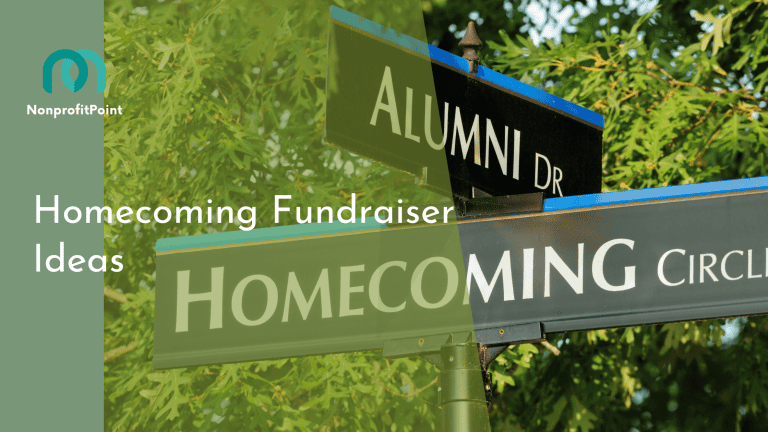15 Unique Historical Society Fundraising Ideas: Engage and Preserve
In an age where the future often overshadows the past, historical societies are the steadfast guardians of our shared heritage. They preserve the artifacts, stories, and architecture that shape our collective identity. However, maintaining these treasures requires more than just passion; it demands funding. This is where the ingenuity of fundraising comes into play. By exploring dynamic and innovative fundraising ideas, historical societies can ensure their legacies continue to thrive for generations to come. Whether you’re a member of a historical society, a local history enthusiast, or simply someone passionate about preserving the past, this post is tailored for you.
Imagine attending a vintage-themed gala under the stars, participating in a heritage scavenger hunt, or investing in a unique piece of local history through a creative auction. These are just a few examples of how fundraising can not only support historical preservation but also engage the community in meaningful and memorable ways. Whether you aim to raise funds for historical renovations, educational programs, or special exhibitions, the strategies shared here will inspire and empower you. Get ready to dive into a world where the past and present collide, creating a promising future for our historical treasures.
Here are 15 Innovative historical society fundraising ideas:
1. Heritage Gala

A Heritage Gala is not just an event; it’s a journey back in time. Imagine transforming a historic venue into a scene straight out of the past, complete with period costumes, antique décor, and music that transports guests to another era. Participants come dressed in vintage attire, enhancing the immersive experience and making everyone feel like a part of history. This formal event can feature a gourmet dinner inspired by recipes from the past, created by local chefs who have researched historical menus.
To add an interactive element, consider incorporating a silent auction with items that reflect your society’s mission—such as rare books, artifacts, or even a private tour of a local historic site led by a knowledgeable historian. You can also include dance lessons for traditional dances, helping to engage guests and create memories that link fun with history.
By showcasing the rich tapestry of your community’s past in an elegant setting, you not only raise funds but also deepen people’s connection to their heritage. With media coverage and social sharing, a well-executed gala could become an annual highlight that people look forward to every year.
2. Historical Homes Tour

A Historical Homes Tour provides an intimate peek into the architectural and cultural layers of your community. By organizing guided tours of some of the town’s most storied and architecturally significant homes, you offer a rare chance for residents and visitors alike to walk through history. Partner with home owners who are willing to open their doors for a good cause, and perhaps augment the tour with knowledgeable docents who can share intriguing anecdotes and historical context about each property.
To make the event more engaging, incorporate multimedia elements such as old photographs, family stories, and even augmented reality apps that show how the homes and neighborhoods have evolved over time. Offer specialized tours—like a twilight tour with candlelight and evening refreshments, or a child-friendly version that includes scavenger hunts and interactive elements.
Supplement the ticket sales with a small marketplace of local artisans and vendors selling vintage-themed goods and refreshments styled after historical recipes. This adds a festive atmosphere to the event and provides more opportunities to raise funds through sales and donations.
3. Time Capsule Auction

A Time Capsule Auction offers a fascinating way to connect the present with the future while generating excitement and funds. Start by hosting a community event where local residents and businesses can contribute items to a time capsule that represents the current era. These items could range from letters and photographs to artifacts that capture the essence of today. Publicize the event to generate interest and encourage a wide range of submissions to make the time capsule a true snapshot of community life.
The twist comes with the auction: people bid for the opportunity to include their personal items, messages, or memorabilia in the capsule. To add layers of interest, consider having different categories or “tiers” of items, ensuring that everyone from young students to prominent local figures can take part.
Once the capsule is filled, seal it and hold a ceremonial burying or storing event, with plans to open it after a significant number of years—say 50 or 100. This not only makes contributors feel like they’re part of something monumental but also ensures future generations will marvel at what was deemed important enough to preserve.
4. Living History Day

Living History Day is a captivating way to bring the past alive, allowing people to experience history firsthand. This event involves volunteers and historians in period costumes reenacting historical events or daily life from different eras. Choose a theme—such as colonial times, the Victorian era, or significant local historical periods—and transform a public space into an interactive historical village.
Activities can include blacksmithing demonstrations, traditional cooking over an open fire, spinning and weaving demonstrations, and old-time games for children. Include storytelling sessions where actors recount tales of historical figures or events, making history poignant and relatable. Invite local schools to participate in educational activities that align with their curriculum, converting the event into an immersive learning experience.
To raise funds, charge an entrance fee and offer additional paid activities such as craft workshops, where participants can make period-appropriate crafts to take home. Set up food stalls with historical recipes and sell handcrafted items as souvenirs. A raffle with historically themed prizes can also add excitement and additional fundraising potential. Promote the event widely through social media, local newspapers, and community boards to draw in crowds from surrounding areas, ensuring not only funds but also heightened awareness and appreciation for your historical society’s role in preserving the past.
5. Artifact Adoption
Artifact adoption is a heartwarming and personal way to connect the community with historical preservation. Instead of merely donating money, patrons get the chance to “adopt” a specific artifact or exhibit. This approach personalizes the donation, allowing individuals or families to feel a special connection to a particular piece of history. For example, they might sponsor the restoration of an old clock, a vintage photograph, or a historic painting. In return, the society can place a small plaque next to the artifact with the adopter’s name or even allow a brief description of why the object is significant to them.
To make the process even more engaging, host a special “Artifact Adoption Day” event where people can view all the items available for adoption, learn about their history, and decide which piece they want to support. Offering flexible adoption packages can cater to different levels of giving, ensuring that everyone, from students to local businesses, can participate. Consider creating thank-you packages that include a photo and a detailed history of the adopted artifact, along with updates on its care and display. Such continuous engagement keeps donors connected and likely to contribute in the future.
By offering adoption options, historical societies not only raise funds but also cultivate a network of dedicated supporters who feel deeply invested in the preservation of their shared history. This strategy transforms donors into lifelong advocates for your mission.
6. Historical Scavenger Hunt
A historical scavenger hunt combines adventure with education, making history fun and accessible for all ages. Design a scavenger hunt that leads participants to various historical landmarks, monuments, and hidden gems within your community. Provide clues or riddles that require participants to learn and discover historical facts along the way. This engages families, school groups, and history enthusiasts in a dynamic way, encouraging them to explore their surroundings with fresh curiosity.
To organize the event, create detailed maps and clue booklets, possibly incorporating QR codes that link to brief online videos or additional hints. Enhance the experience by including small challenges at each stop—like matching vintage photographs to current views or finding specific architectural features. Set up checkpoints where participants can have their booklets stamped or validated. Charge an entry fee per team and offer enticing prizes for different categories such as the quickest completion, most creative team name, or best period costume.
To amplify the event’s reach, partner with local schools, libraries, and businesses. These partnerships can provide additional promotion and potentially offer prize donations, making the event even more appealing. The scavenger hunt not only raises funds but also spreads knowledge of local history and encourages community interaction.
7. Old-Fashioned Carnival
An old-fashioned carnival offers a charming, nostalgic experience that appeals to many. Imagine a fairground bustling with traditional games like sack races, ring toss, and pie-eating contests, all designed to evoke the joy and simplicity of past decades. These timeless amusements can attract not only families with children but also adults eager to reminisce about their own youthful days at the fair.
To set the stage, adorn the venue with vintage decorations like bunting and antique signage. Offer classic carnival foods like cotton candy, popcorn, and homemade lemonade, crafted to mirror historic recipes. Local vendors can add to the atmosphere by selling handcrafted goods and retro-themed souvenirs.
Two key ways to raise funds are through ticket sales and the inclusion of a few key attractions that require additional tickets or tokens. These attractions could include a historical photo booth with costumes, an old-fashioned dunk tank, or even rides on vintage carousels if available. Consider inviting local historians or older community members to share stories or demonstrate traditional crafts, adding an educational layer to the entertainment. With the right marketing and community engagement, an old-fashioned carnival can become a beloved annual tradition that draws larger crowds each year.
8. Vintage Fashion Show
A vintage fashion show weaves together style and history, creating a visually stunning and informative event. By collaborating with local designers and vintage clothing stores, you can curate a runway show that highlights fashion from different eras. This not only attracts fashion enthusiasts but also those interested in the social history encapsulated by the changing styles. Each segment of the show can focus on a specific decade or theme, accompanied by narration that explains the historical context and societal trends of the time.
Transform the event into an engaging experience by setting it in an iconic or historic venue. Attendees can relish not just in the visual spectacle but also in the ambiance of a place with a story. Offering pre-show cocktails or a post-show reception with vintage-inspired refreshments adds to the event’s allure. Encourage guests to dress in their favorite vintage outfits, and create a Best Dressed contest to further boost engagement.
Revenue can be generated through ticket sales, but also through partnerships with designers who might sell replicas or original vintage pieces after the show. Include a silent auction featuring items like custom vintage-inspired dresses, exclusive accessories, or high-fashion pieces donated by local stores. This event not only raises funds but also positions your historical society at the intersection of history and contemporary culture, widening its appeal and influence.
9. Heritage Cookbook
A heritage cookbook is a tasteful way to blend culinary arts with historical storytelling. By compiling recipes that have been handed down through generations, your historical society can create a unique publication that not only preserves cultural heritage but also provides a tangible connection to the past. Begin by reaching out to the community for contributions—this could involve asking local families to share their treasured recipes, along with the history behind them. This transforms the cookbook into a collection of personal and community narratives, offering readers a deeper insight into the lives and traditions of their predecessors.
To enhance the cookbook’s appeal, include photographs of the dishes and the families who contributed the recipes. Also, incorporate historical anecdotes and fun facts about the origins of certain foods and culinary practices. Collaborate with local historians or chefs to add credibility and interesting commentary on how these recipes fit into the broader historical context.
Once the cookbook is ready, you can sell it at community events, local bookstores, and online. Host a launch event featuring tastings of some of the recipes, live demonstrations by local chefs, and talks by the contributors about their family histories.
This not only boosts initial sales but also fosters a sense of community pride and connection. You might also consider offering a digital version or e-cookbook for tech-savvy supporters, broadening your reach and fundraising potential.
10. History Podcast or Web Series
Creating a history podcast or web series taps into the modern trend of digital storytelling, offering a dynamic platform to share local history with a wider audience. Start by identifying compelling stories, historical events, or notable figures from your community’s past. Each episode can explore these topics in depth, featuring interviews with local historians, descendants of historical figures, or even re-enactments and dramatizations for a more engaging presentation.
To produce high-quality content, consider partnering with local colleges’ media departments or freelance content creators who can assist with recording, editing, and marketing. Adding musical scores and sound effects can enhance the storytelling, making the past come alive for listeners. The key is to combine thorough research with creative production to captivate your audience.
Monetize your podcast or web series by offering exclusive content to subscribers, such as behind-the-scenes insights, extra interviews, or extended episodes. Platforms like Patreon can help you manage subscriptions and offer different tiers of support. Couple this with sponsorship from local businesses or grants aimed at educational content creation. Promote the series widely through social media, local news outlets, and collaborations with other history-focused organizations to build a robust listenership. This digital venture not only raises funds but also significantly broadens the reach and impact of your historical society.
11. Cultural Heritage Festival
A cultural heritage festival is an excellent way to celebrate the diverse histories and traditions of your community. By hosting a festival that showcases various cultural expressions through food, music, dance, and crafts, you create an inclusive event that brings people together. Start by identifying the different cultural groups within your community and inviting them to participate in the festival. This could involve setting up booths where they can share traditional foods, display handicrafts, or perform traditional dances and music.
To add depth, consider organizing workshops where attendees can try their hands at traditional crafts or cooking techniques. These interactive elements make the festival not just a series of performances and displays but an immersive educational experience. You might also incorporate storytelling sessions where elders share myths, legends, and historical accounts from their cultures, helping to preserve oral histories.
Sell tickets for entry, but also find other fundraising opportunities within the event, such as food and craft sales, raffles with culturally significant items, and sponsorship from local businesses. Partner with schools and local media to promote the event, ensuring broad community participation. A well-executed cultural heritage festival not only raises funds but also fosters a better understanding and appreciation of the rich, diverse histories that compose your community.
12. Historical Lecture Series
A historical lecture series can transform academic history into an engaging community experience. By inviting historians, authors, and experts to speak on various interesting topics, you provide a platform for learning and discussion. Start by curating a diverse lineup of speakers who can cover a wide range of subjects—from significant local events and figures to broader historical themes that tie into local heritage.
Host these lectures in a venue that itself has historical significance, such as an old courthouse, a restored theater, or a local museum. This not only provides a fitting backdrop but also enhances the atmosphere of the event. Complement the lectures with multimedia presentations, interactive Q&A sessions, and book signings if your speakers are published authors.
To raise funds, sell tickets for individual lectures or offer season passes for the series. You can also provide premium seating options or exclusive meet-and-greet opportunities with the speakers for an additional fee. Engage local businesses for sponsorships and advertise in community newspapers and online platforms to attract a broad audience. Recording the lectures and offering them as digital downloads or streaming content can also provide an ongoing revenue stream and ensure that the knowledge shared reaches an even wider audience.
13. Pioneer Skills Workshops
Pioneer skills workshops offer a hands-on way to experience history by teaching traditional crafts and trades from a bygone era. These workshops can cover a wide range of activities—from blacksmithing and quilting to candle making and bread baking. Partnering with skilled artisans and craftsmen who specialize in these trades ensures authentic, high-quality instruction, providing participants with both valuable skills and a deep appreciation for the labor and techniques of the past.
Begin by creating a calendar of workshops, each focused on a specific skill. Offer these events over weekends or as part of a week-long series to cater to different schedules. Each session should include a historical overview, an introduction to the tools and materials used, and a hands-on component where participants can create their own projects. For example, a blacksmithing workshop could allow attendees to forge simple tools or decorative items, giving them a tangible piece of history to take home.
Charge a participation fee that covers the cost of materials and compensates the artisans, with a portion going to your historical society. To add value, provide attendees with detailed booklets about the history and techniques of each skill, and consider creating follow-up online resources or videos for continued learning. Promote these workshops through community boards, local schools, and social media to attract a diverse group of participants. This approach not only raises funds but also enriches the community’s understanding and appreciation of historical crafts and trades.
14. Memory Wall
A memory wall is a heartfelt and visually impactful way to celebrate personal and community histories while raising funds. This project involves creating a physical or digital wall where community members can share their family histories, photographs, and personal stories. By donating, individuals earn the right to have their memories displayed, creating a tapestry of shared experiences and legacy.
Start by selecting a prominent location for the physical memory wall—such as a local museum, community center, or public park. Alternatively, a digital memory wall can be hosted on your society’s website, accessible to a global audience. Gather submissions by reaching out to local families, schools, and senior centers, encouraging people to submit not just their stories but also photos, letters, and other memorabilia.
Offer different levels of donations, with larger contributions earning more prominent placements or additional features like video clips or audio recordings of personal anecdotes. Launch the memory wall with an event that celebrates the community’s shared history, potentially including live storytelling sessions, music, and refreshments. This launch event can also serve as an initial fundraising opportunity through ticket sales and donations.
To keep the project dynamic, regularly update the wall with new submissions and host annual events to celebrate new additions. This ongoing effort not only keeps the community engaged but also continually brings in funds and fosters a collective pride in preserving local history.
15. Historic Garden Party
A historic garden party is an elegant and engaging way to combine fundraising with a celebration of history and nature. Imagine hosting an event in a beautifully maintained historic garden or park, adorned with blooms and greenery reminiscent of a specific historical period. Guests can enjoy the serene setting while participating in activities that bring the past to life.
Begin by selecting and preparing the venue, ensuring it’s pristine and historically themed. Arrange for period-appropriate decorations and hire performers to play live music from the chosen era. Provide tables with vintage linens, china, and floral arrangements that reflect the aesthetics of the past. Offer traditional games like croquet, lawn bowling, or even a maypole dance to entertain guests.
To create a full experience, serve a menu inspired by historical recipes, offering both classic beverages and dishes. You could even include a brief history of each item on the menu, adding an educational element to the enjoyment. Sell tickets at different price points, maybe offering exclusive perks like guided tours of the garden or VIP seating areas for higher-tier tickets.
Incorporate fundraising opportunities such as a silent auction with items related to the theme—like rare plants, gardening tools, or historically inspired crafts. Partner with local businesses and artisans to donate auction items, further integrating the community. Promote the garden party through local media, social networks, and community bulletins to attract a wide audience.
By holding a historic garden party, you provide a delightful escape into the past, fostering community connections and raising essential funds for your historical society. Such an event not only celebrates the beauty and tranquility of historic gardens but also emphasizes the importance of preserving these cultural and natural treasures for future generations.
Final Thoughts
Preserving history is not just about maintaining old buildings or keeping artifacts in glass cases; it’s about nurturing the connection between our past and our present. These fundraising ideas go beyond mere money-raising efforts—they foster a profound appreciation for where we come from, intertwining community, education, and engagement. Each event and project embodies the rich stories waiting to be uncovered, shared, and celebrated by generations.
As we dive into these creative endeavors, we remember that history is a living, breathing entity, and by actively participating in its preservation, we ensure it continues to inspire and educate. Embrace these innovative fundraising avenues not only as means to support your historical society but also as opportunities to build stronger, more connected communities that honor their shared past.
In a world that often races towards the future, take a moment to reflect on the invaluable lessons and beauty embedded in history. Engage with it actively, create memories through it, and understand that by investing in the preservation of our historical heritage, we invest in a well-rounded, enriched future. How will you choose to make history come alive today?






